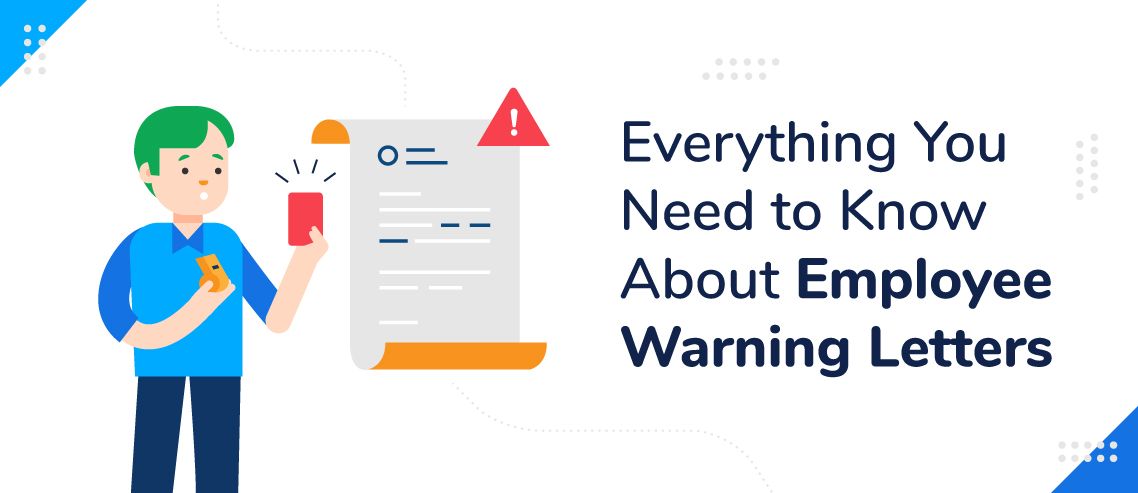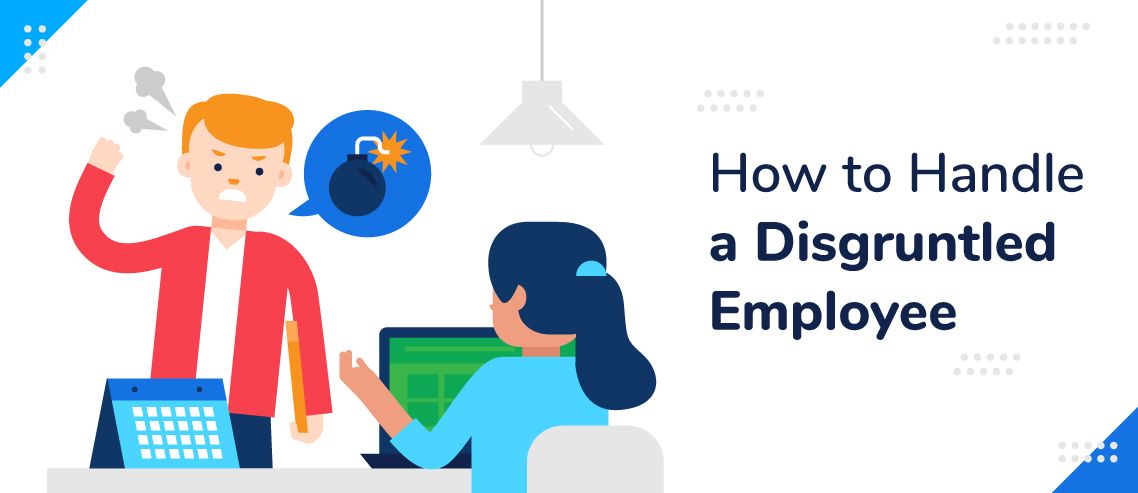Comprehensive Guide to Employee Warning Letters (Including Free Template)

Employee warning letters are one of the most useful tools employers have at their disposal when it comes to carrying out disciplinary procedures.
However, disciplinary procedures have the potential to turn nasty if the employee should disagree with the reason they have been subject to disciplinary action, or dispute their employer’s version of events. In some cases, this can lead to legal action.
This is why it’s so important to get employee warning letters right. As well as informing the employee of the situation and the next steps, they are used to record the situation and what action was taken, which can be extremely useful down the line.
Here’s everything you need to know about employee warning letters.
What Is an Employee Warning Letter?
An employee warning letter is a formal HR document which is sent to staff for a variety of reasons relating to employee misconduct.
As well as outlining the details of the misconduct, employee warning letters also typically detail the actions the employee must take to escape further disciplinary action. They will then explain the consequences if the employee fails to follow these actions and rectify the situation by an agreed deadline.
It could form the first step of the disciplinary procedure, or it may be used to record the details of a disciplinary meeting. However, most commonly an employee warning letter is the second step in a disciplinary process that occurs when no improvement has been seen following an initial verbal warning.
How to Write an Employee Warning Letter
An employee warning letter can be a tricky document to write. While the facts of the matter are likely relatively straightforward, it’s important to ensure that the document is 100% accurate because should the employee contest the disciplinary procedure or even take legal action, it will likely be referred back to.
For this reason, keeping it entirely factual and objective is absolutely essential. It is vital that the letter writer does not let any biases sneak into the writing, as this could be used against them or their company in a legal setting.
Secondly, proofread the letter. If you want the recipient to take it seriously, you need to ensure that this document is composed in the most professional manner possible, and in a formal tone of voice: typos simply won’t do. Furthermore, proofreading helps you to ensure that you’re getting the intended message across effectively.
An employee warning letter has multiple purposes. One of those is to record events accurately – if you need to revisit this disciplinary procedure in the future, it will be extremely helpful to have an account of the situation written down. For this reason you should ensure that key details of the situation, such as time and date, and parties involved, are all written down.
Towards the end of the letter, it is useful to reinforce the consequences of the employee failing to take the steps you’ve outlined to solve the issue – even if you’ve already been through this with them in person. Finally, conclude on a positive, constructive note that will make them want to engage with the process and secure their job.
What to Include in an Employee Warning Letter
Exactly what you include in the employee warning letter will depend on the specifics of the situation, and the point you’ve reached in the disciplinary procedure.
However, every employee warning letter should contain the following elements.
- Recipient’s name, address, and other contact details
- Date of delivery
- A formal tone of voice throughout
- The outline of the situation that has caused the warning letter to be written
- The consequences of the situation for the employee in question
- What – if anything – the employee can do to rectify the situation and ensure that the issue does not arise again
- What SMART goals you expect them to hit while taking the outlined actions to rectify the situation
- The timeline in which you will expect to see these improvements, where relevant
- The details of any disciplinary action arising from the situation, where relevant
- Next steps
- Date of follow up meeting
- The letter writer’s name and signature
- The employee’s name and signature
Tips for Writing an Employee Warning Letter
Time is of the essence when it comes to disciplinary matters. This is why you should write and deliver the employee warning letter as soon as possible.
How to deliver it? Deliver the letter in person in a private meeting, and ask the recipient to sign it in front of you to confirm that they agree with the account of events and next steps outlined in the document. Alternatively, if you work remotely you can ask them to sign the document electronically while on a call with you.
Where necessary, a follow up meeting should be scheduled ahead of the letter’s delivery. The date, time, and location of this follow up meeting should be included within the letter.
In order to measure the individual’s progress, SMART goals and KPIs, including timelines, should be included in the “agreed upon actions to rectify the situation” section of the letter.
Don’t be afraid to seek guidance from a legal or HR expert where necessary. This could save you a lot of trouble in the long run, should the disciplinary procedure turn nasty.
JD enjoys teaching people how to use ZoomShift to save time spent on scheduling. He’s curious, likes learning new things everyday and playing the guitar (although it’s a work in progress).



